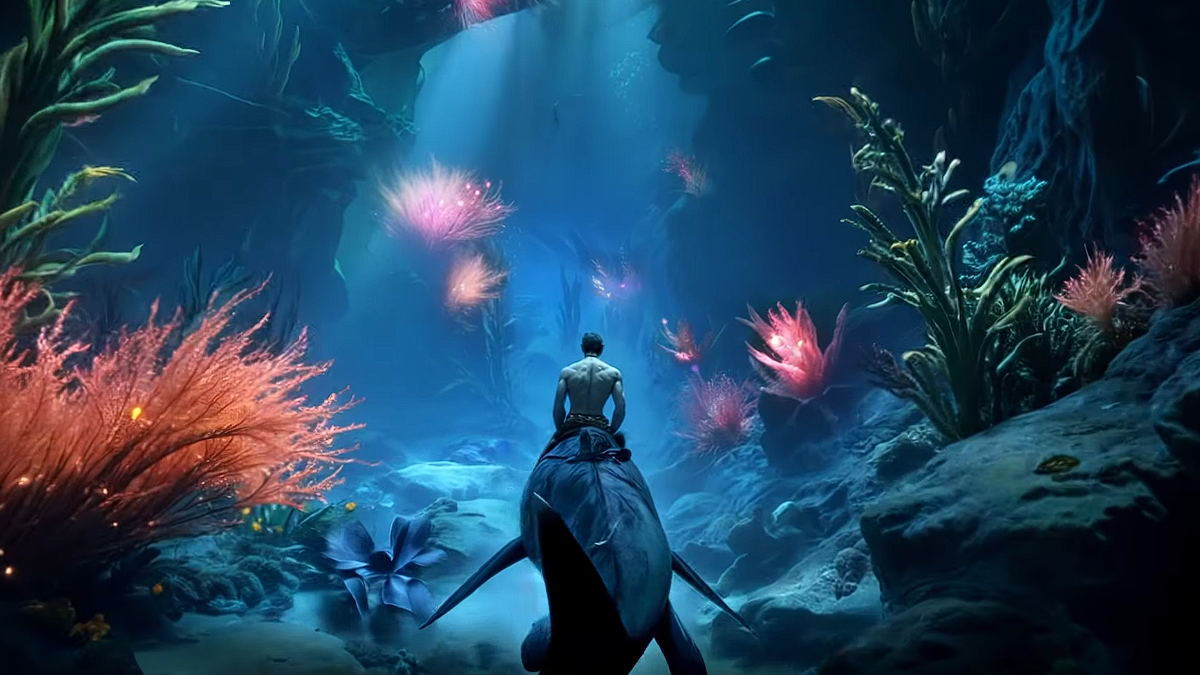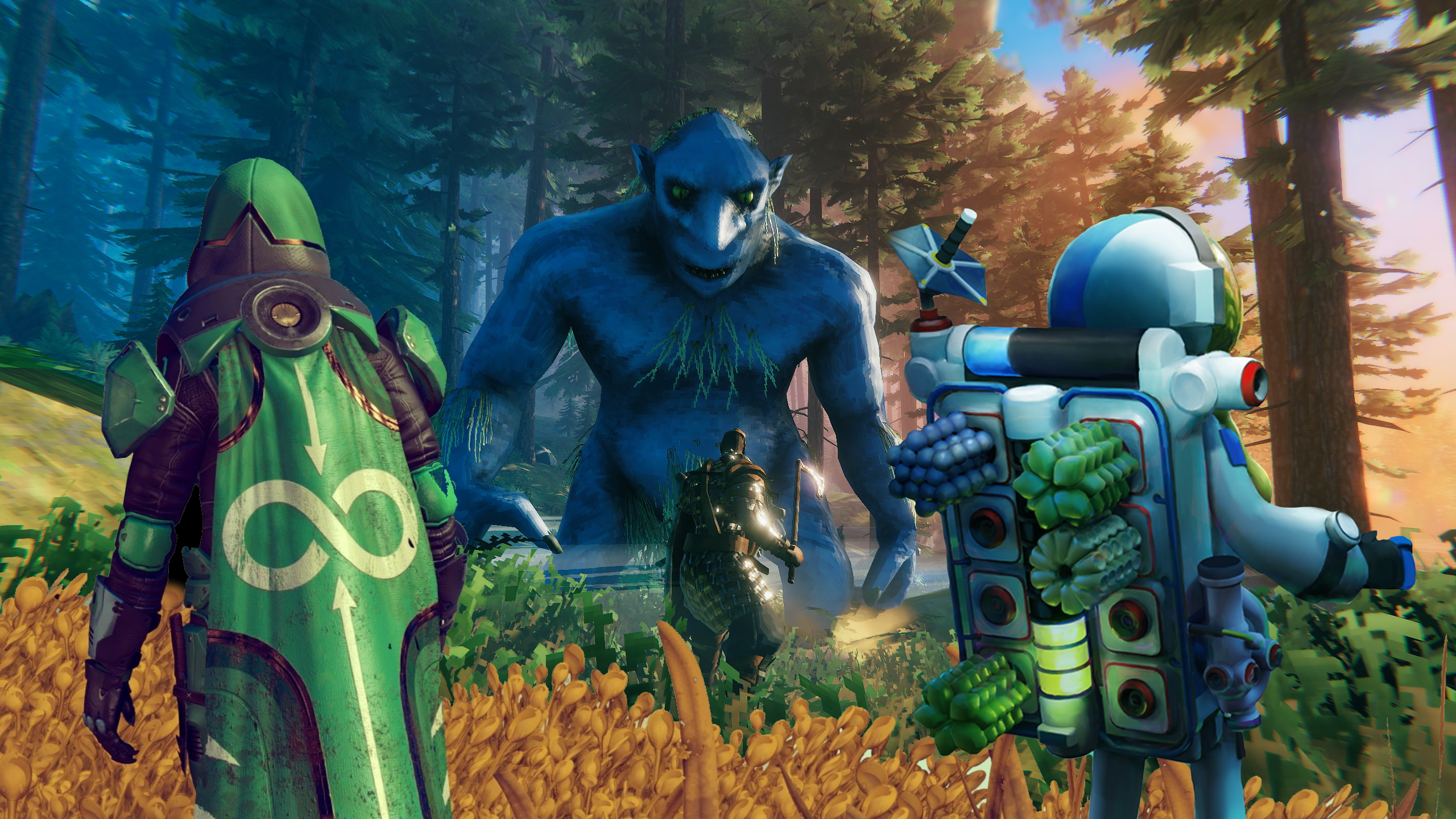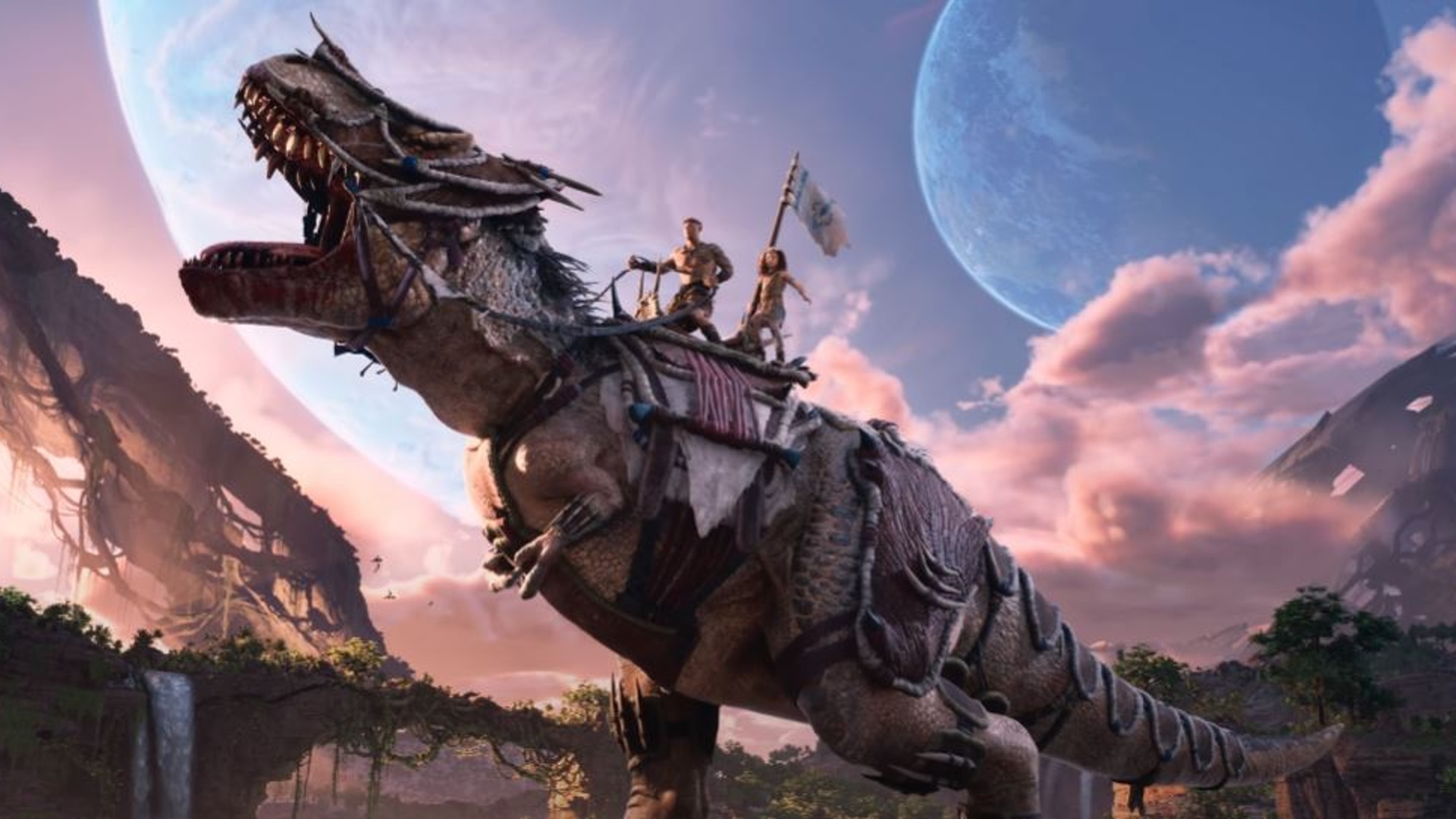Ark Survival Evolved Island Guide
How to find your way around ARK
One of the most productive things you can do early on in ARK: Survival Evolved is familiarise yourself with your surroundings. By learning the lay of the land, you’ll dramatically reduce your chances of getting lost (which can be one of the most frustrating occurrences early on in the game) and be far less likely to stumble unprepared into one of the island’s distinct biomes, each of which has its own weather quirks, environmental features, resources and wildlife.
For more Ark Survival Evolved advice, check out our beginner's tips, resource, recipe, and crafting guide, base building guide, and Ark taming guide.
Orientating Yourself
When you first spawn on the island, you’ll automatically be given a map. Don’t get too excited, however - your map starts off blank, and only gains detail as you thoroughly explore your surroundings. As such, you’ll find it pretty useless early on in the game, and will need to rely on some additional navigational tricks if you’re to get around safely.
The Obelisks
The easiest way to orientate yourself on the island is to use the three large obelisks that loom high above the landscape. You’ll find the green obelisk near the coast to the east, the red obelisk near the coast to the west and the blue obelisk to the north. Obelisks are tied to ARK’s late game content, but early on (when your map is useless and a compass is but a dream) they provide a crucial navigational aid. You can see two Obelisks from almost anywhere on the island; as such, if you get lost, use them to triangulate your position. Additionally, these towering sci-fi edifices make convenient rendezvous points.
Land, Sea Or Air?
Unsurprisingly, the more you explore your surroundings, the greater your chances of survival. Early on, of course, you’ll largely be restricted to moving on-foot, severely limiting the distance you can travel. Eventually, however, you’ll be able to tame and ride creatures across the land, navigate the waterways and oceans with rafts and aquatic beasts and even take to the air on birds and flying creatures. In terms of travel, the unassuming, flying Pteranodon is one of the most valuable creatures in the game - and, better still, one of the easier creatures to tame. Acquiring one should definitely be high on your to-do list.
How To Use Coordinates
You’ll soon notice that many established ARK players use coordinates to direct each other to points of interest (such as a high level wild creature) around the island. The precise coordinates of your current location can be acquired by crafting a GPS later in the game. If you need to find your way toward a specific coordinate before then, however, you’ll need to rely on the longitude and latitude markings etched around your map. These marking are inexact, though - and are obviously next to useless if you manage to get lost.
Here’s a handy tip if you want to look at your map or GPS while steering a mount or vehicle: although the camera defaults to third-person when riding a creature or raft, it’s possible to switch to first-person by flicking your mouse wheel. Do this and you can study your map up close or check your coordinates while on the move - a real time saver!
Getting To Know Your Environment
While nothing trumps thorough exploration when it comes to understanding the environment, it’s still handy to have a rough idea of ARK’s topography before taking your first steps. Here, then, are some of the island’s most noteworthy features.
North Versus South
Generally speaking, the further north you travel in ARK, the more treacherous the environment becomes - making the island’s southern half far more suitable for beginners. Terrain is easier to navigate down south, the climate is less extreme and creatures tend to be smaller and less aggressive. That said, wildlife can wander - so, while the south is predominantly home to herbivores and weaker predators, don’t be surprised if you stumble across a super-charged alpha T-Rex once in a while. Likewise, there’s no guarantee that aggressive tribes won’t patrol the south when playing PvP.
Biomes
Grassland
Across much of the south, you’ll find flat, verdant grass, full of snaking rivers, rolling hills and ample woodland. It’s rich in basic resources, and makes a good place to lay your hat in the early stages of the game - although you can still expect to find piranhas in the water and predators on the prowl! Thankfully, most wildlife here (even the aggressive kind) doesn’t pose much of a threat, but be ready to encounter the occasional T. rex, river-loving Spinosaur and alpha predator - all of which can do serious damage.
Swampland
Dense, foggy swampland cuts across the lower third of the island, running from east to west. Its waterways are clogged with thick foliage that makes ground-level navigation tricky and conceals a host of deadly wildlife - including prehistoric crocodiles, insects and massive boa constrictors. It’s not all horror though - you’ll also find the frog-like Beelzebufo here, along with rare mushrooms and flowers. It’s generally best to avoid the swamp unless you absolutely must visit, however, and a flying mount (or the speedy swimmer Sarcosuchus) will enable you to bypass the area with ease.
Forests And Jungles
Dotted all around the island, you’ll find forests and jungle-like terrain. Unsurprisingly, both are plentiful in Wood (which you’ll need a load of once you start crafting) but can prove tricky to navigate. Jungles, in particular, can be utterly disorientating given their density, and it’s easy to be ambushed by the island’s carnivorous wildlife (such as the Raptor, Carnotaurus and Dilophosaur) as you stumble blindly through the undergrowth.
Mountains
Five mountains loom to the north, stretching from one side of the island to the other. These peaks are thoroughly hostile, and home to the likes of the deadly Sabertooth and eagle-like Argentavis. Mountains, however, are rich in Rocks, Flint and, crucially, Metal, Crystal and Obsidian. These latter materials are core to crafting later in the game so mountains are hard to avoid. Additionally, you’ll find rare flowers and rare mushrooms here too.
Snow Biome
At the north-western-most tip of the island, you’ll find a vast, snow-covered mountain surrounded by frozen wasteland - arguably the most treacherous environment in the game. It’s not the local wildlife you should worry about, though - Mammoths and the moose-like Megaloceros are docile, while Direwolves and the occasional Argentavis are easy enough to fight. Instead, it’s the freezing temperatures that pose the biggest threat to your survival as you navigate the penguin-packed ice drifts along the coast and pick your way through the area’s labyrinthine, oil-rich forests. Fur outfits and fire sources are a must.
Beaches And Ocean
Generally speaking, beaches (which circle almost the entire island) are the safest place to be in ARK. It’s rare to find large predators here (assuming you avoid the water, of course), and the southern shores are frequently packed with starter huts as a result. On the downside, resources are relatively limited on beaches. You’ll find reasonable quantities of wood, stone and berries - but you’ll need to travel inland for more bountiful supplies.
The ocean, meanwhile, is considerably less safe - and there’s an entirely unique, frequently deadly ecosystem down beneath the waves. You’ll need a strong pair of lungs (or scuba gear) to explore the ocean thoroughly - but, if you’re brave enough, you’ll discover rare resources (such as oil and pearls), underwater caves and marine life ranging from the deadly Megalodon and Mosasaurus to the ever-curious Ichthyosaurus.
Weather And Temperature
If ARK’s landscape sounds unusually diverse, just wait until you experience the island’s varied climate! ARK features a dynamic, ever-changing weather system which can leave you drenched in torrential rain one minute and sweltering in a heatwave the next.
As the weather changes on the island (and as day turns to night), temperatures will rise and fall too. Day, naturally, is warmer than night (especially during heatwaves, visible when the sky turns a fiery orange), while rain and snow cause your body temperature to plummet. These constant fluctuations in temperature can have a huge impact on your physical wellbeing, so it’s vital that you learn to recognise and counter their effects.
Once you pass a certain temperature threshold (either becoming too hot or too cold), you’ll begin to suffer from hyperthermia or hypothermia - the former causing dehydration and the latter leading to starvation. There are two stages to each condition - cold and freezing, and hot and burning - with each stage having a more pronounced impact. Needless to say, you’ll want to mitigate their effects quickly.
Heat (whether from the sun or from fire or exertion) can be countered by rain, water and shelter, for instance, while cold (from rain, water, or exposure at night) can be countered by fire or the sun. Unsurprisingly, clothing also provides different levels of hyperthermic and hypothermic protection - although you’ll find that clothing designed to combat one extreme temperature often leaves you susceptible to the other. Fur clothing, for instance, can be disastrous in a heatwave, so always have a varied wardrobe to hand.
As a final note, ARK’s development team has been experimenting with seasonal weather changes that can have a dramatic impact on the island’s appearance, ecosystem and climate, depending on the time of year that you play. Following a long, hot summer and dank, misty autumn, for instance, the island is currently gripped by winter; snow blankets the entire world (not just the northern-most biome), temperatures are far colder than normal, and heavy blizzards are a regular occurrence. Wrap up warm!











